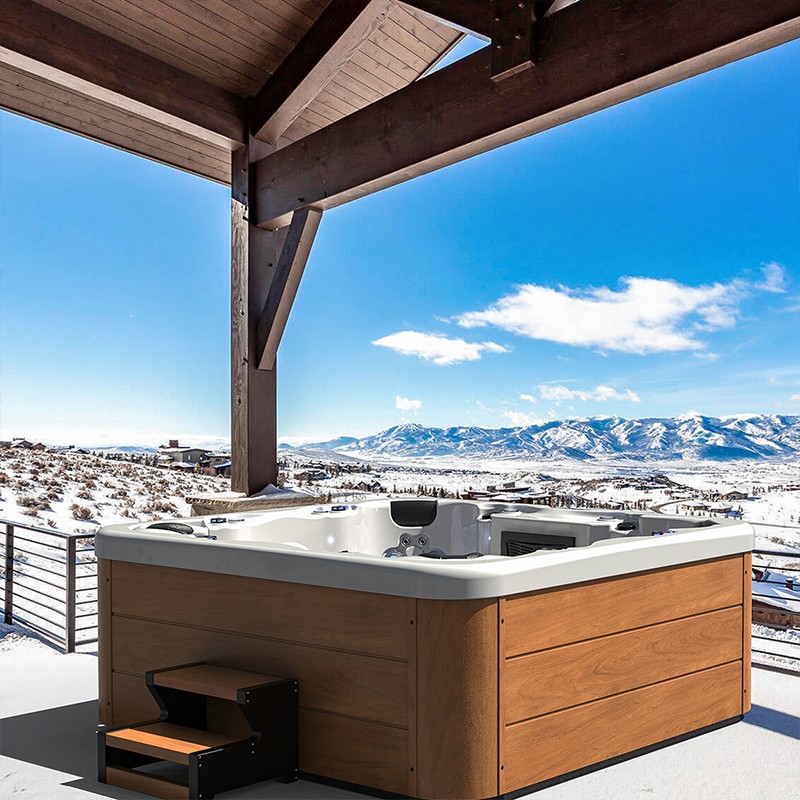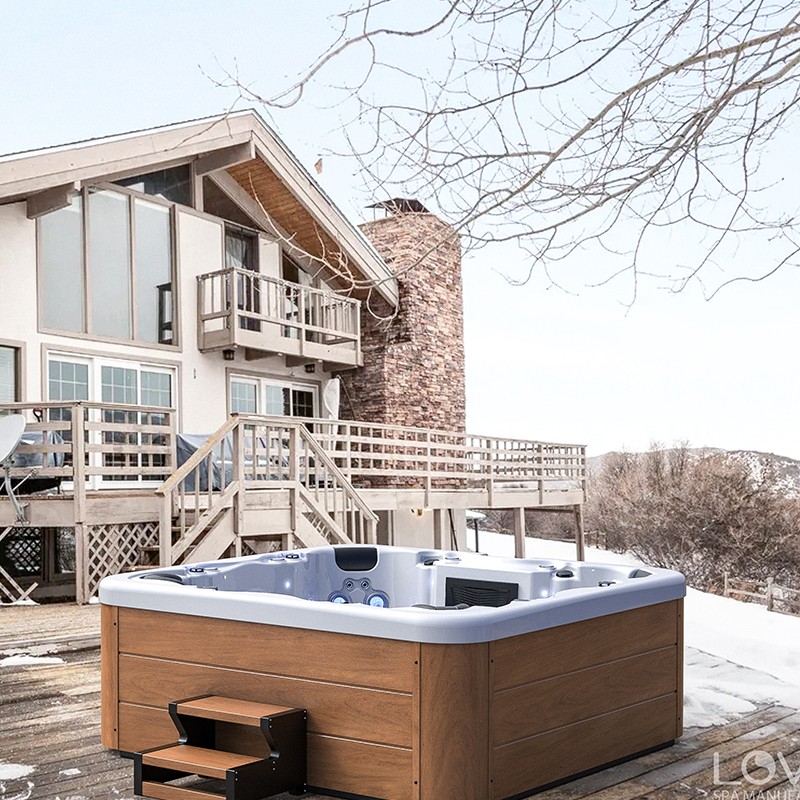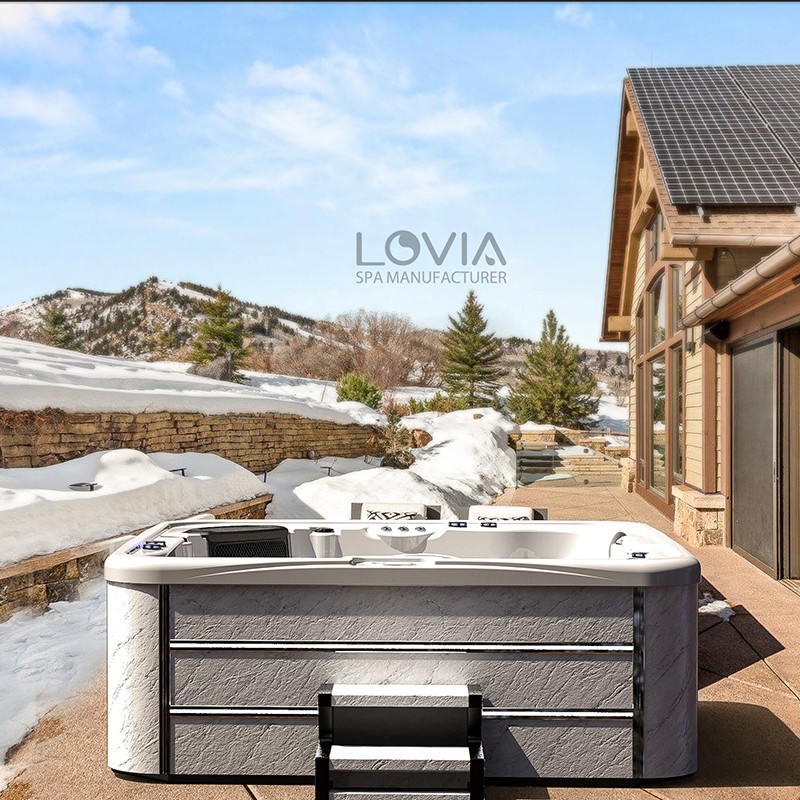
How cold does it have to be for outdoor hot tub pipes to freeze?
2024-12-06 15:30As a leisure device, outdoor hot tubs provide people with a warm and comfortable experience in cold seasons. However, as the temperature drops in winter, especially in cold areas, the hot tub pipe system faces a serious problem - freezing. If the water in the pipes freezes in cold weather, it may cause pipe ruptures, equipment damage, and even cause more safety hazards. So, how cold does the outdoor hot tub pipes have to be for them to freeze? Under what temperature environment is the pipe system susceptible to being affected?
This article will explore the temperature threshold for pipe freezing and how to avoid such situations from the perspective of physics, thermodynamic principles, and hot tub equipment characteristics.

What is the freezing temperature of hot tub water? What factors affect the freezing temperature?
The freezing point of water is the core of understanding the phenomenon of hot tub pipe freezing. From a physical point of view, the freezing point of pure water is 0°C (32°F), which means that when the ambient temperature drops to 0°C or lower, still water will begin to freeze. However, in actual situations, the water in the pipes of an outdoor hot tub is not completely static. The water flow, pipe material, system heat source and other external conditions will affect the specific temperature of freezing.
Water flow affects the freezing speed
Water is not easy to freeze when it is flowing. The water in an outdoor hot tub is usually in a state of continuous circulation to keep the water temperature and evenly heated. The flow of water will slow down its freezing speed because the energy transfer when the water flows will inhibit the formation of freeze. Only when the water stops circulating or circulates too slowly, and the external temperature continues to be below the freezing point, the water may freeze in the pipe.
The influence of pipe material
The pipes of hot tubs are usually made of plastic (such as PVC) or metal materials. Plastic pipes have poorer thermal conductivity than metal pipes, so in cold environments, the water in plastic pipes is not easy to cool down quickly. Metal pipes have strong thermal conductivity and will exchange heat with the external environment faster, which makes it easier for the water temperature to drop rapidly to the freezing point. Therefore, different pipe materials affect the speed of water freezing in the pipe.
Effects of Salt and Impurities on Freezing Point
Dissolved salt and other chemicals in water (such as disinfectants such as chlorine and bromine) also affect the freezing temperature of water. Water with dissolved substances has a lower freezing point than pure water. Generally speaking, the freezing point of salt water is below 0°C, which means that if the water in the hot tub is chemically treated, it will freeze at a slightly lower temperature than pure water. However, this effect is not significant in the water treatment of ordinary home hot tubs.
Persistence of Outside Temperature
Freezing of water in pipes depends not only on the instantaneous temperature of the outside, but also on the duration of the low temperature. If the outside temperature is continuously below freezing, especially in the range of -5°C to -10°C or even lower, and the system is not heated or the water circulation is interrupted for a long time, the water in the pipes may begin to freeze. Generally speaking, it is only after several hours or more of exposure to below zero that the water in the pipes has a greater probability of freezing.

What are the critical temperature points in a hot tub system?
A core purpose of outdoor hot tub design is to be able to operate in cold environments. Therefore, the heating system, insulation and water circulation mechanism of the equipment are all designed to ensure that the water does not freeze easily in cold weather. Here are some key temperature points and equipment features that are crucial to prevent the water in the hot tub pipes from freezing:
Freeze Protection Mechanism
Most modern outdoor hot tubs are equipped with a Freeze Protection System. When the external temperature is close to freezing, the freeze protection system automatically activates the water pump and heater to ensure that the water continues to flow and maintain a certain temperature to prevent the water in the pipes from freezing. Usually, the trigger temperature of the freeze protection system is between 4°C and 7°C, which means that when the outside temperature is close to 0°C, the system will intervene in advance to prevent the water in the pipes from freezing.
Circulation Heating System
In order to prevent the water temperature from dropping to freezing point, outdoor hot tubs usually have a circulation heating system to keep the water temperature at a certain level even when not in use. Most hot tubs are set at a water temperature of around 35°C to 40°C, which not only provides a comfortable bathing experience, but also prevents the water from freezing in cold weather. Even if not used for a long time, as long as the system is kept in a low-speed cycle, the water temperature will not drop below freezing quickly.
Risks at critical temperatures
If the outside temperature drops below -10°C and the unit is not in operation for a long time or the power is lost, the water in the hot tub pipes will face a high risk of freezing. In such extreme conditions, especially when the pump stops working and the water is no longer flowing, the water temperature will drop to freezing point quickly. Generally, in the range of -5°C to -15°C, the water in the pipes can freeze within a few hours if the system is not protected.
What are the potential consequences of frozen pipes?
If the pipes of your outdoor hot tub freeze, the consequences can be quite serious. Water expands when it freezes, and this expansion effect can put tremendous pressure on the pipes and equipment, causing pipe ruptures, joint damage, and even damage to the entire heating system.
Pipe ruptures
When water freezes and expands in the pipes, PVC or metal pipes may rupture because they cannot withstand the expansion pressure. Once a pipe ruptures, it will not only cause water leaks in the water system, but it may also cause further equipment failures and even require the replacement of the entire pipe system.
Heater Damage
If water freezes near the heater, the heater will not function properly and may overheat due to lack of water when the system is powered on. The heater's dry-boil protection mechanism may be triggered, but without adequate protection, the heater may be permanently damaged.
Increased Repair Costs
Frozen pipes not only cause the unit to lose functionality, but also come with high repair costs. Broken pipes usually require professional replacement, which involves costs not only for parts but also labor. In addition, if the hot tub's heater or pump is damaged, the repair cost will be even higher.

How to prevent outdoor hot tub pipes from freezing?
Although cold weather brings potential risks to outdoor hot tubs, the chances of pipes freezing can be greatly reduced with some simple but effective preventive measures.
Keep the water flowing
Water does not freeze easily when it is flowing. Therefore, keep the hot tub's pump and circulation system running regularly, even in cold weather. Most outdoor hot tubs have anti-freeze systems that automatically start when the temperature drops, but users can also manually start the pump to ensure that the water continues to flow.
Check the anti-freeze protection system regularly
The anti-freeze protection system is the first line of defense against freezing water pipes. It is important to regularly check and ensure that the antifreeze system is working properly. Especially before the cold season arrives, it is recommended to conduct a comprehensive inspection of the entire heating and circulation system to ensure that it can operate normally in low-temperature environments.
Use a thermal cover
The thermal cover not only prevents heat loss, but also effectively prevents the direct impact of low temperatures on the pipes in extremely cold weather. A high-quality thermal cover can retain most of the heat in the tub and prevent the water temperature from dropping too quickly.
Drain the pipes
If you do not plan to use the hot tub for a long time or the outside temperature is extremely cold, you can consider draining the water in the pipes. Draining the pipes prevents the water from freezing in low temperatures and completely eliminates the risk of pipe rupture. At this time, it is recommended to completely turn off the power to ensure that the system is in a dormant state.
Guangzhou HuanTong Industrial stands out as a trusted supplier and manufacturer of spas and swim spas. Backed by the Lovia Spa brand, we offer discounts on bulk purchases, ensuring quality and affordability for businesses worldwide.
